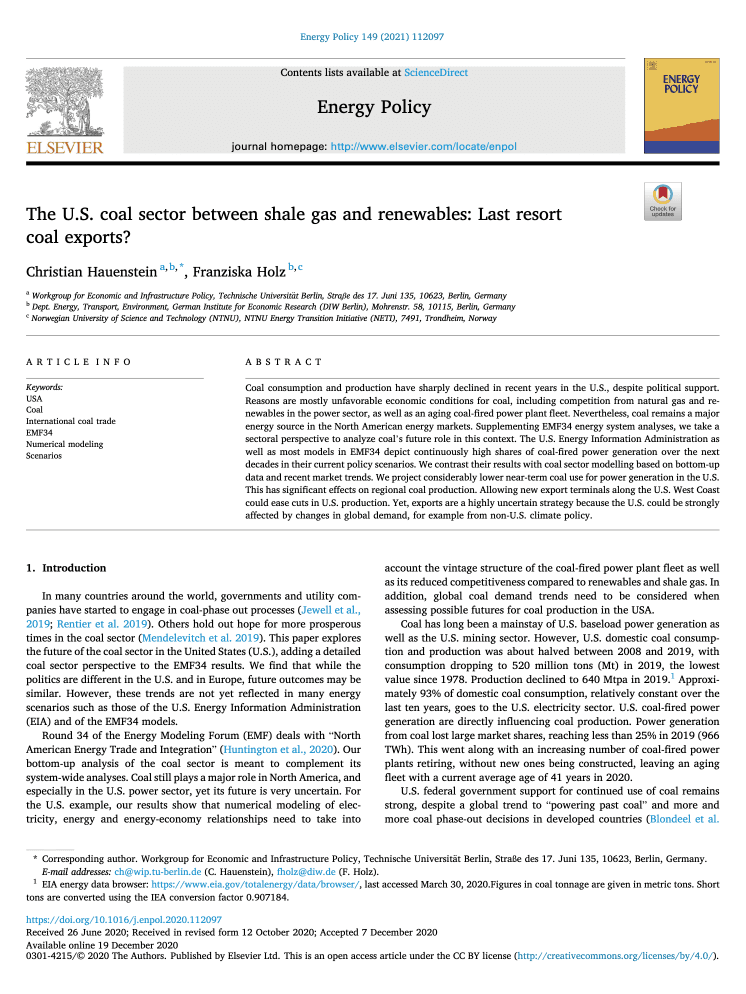The U.S. coal sector between shale gas and renewables

Coal consumption and production have sharply declined in recent years in the U.S., despite political support. Reasons are mostly unfavorable economic conditions for coal, including competition from natural gas and renewables in the power sector, as well as an aging coal-fired power plant fleet. Nevertheless, coal remains a major energy source in the North American energy markets. Supplementing EMF34 energy system analyses, we take a sectoral perspective to analyze coal’s future role in this context. The U.S. Energy Information Administration as well as most models in EMF34 depict continuously high shares of coal-fired power generation over the next decades in their current policy scenarios. We contrast their results with coal sector modelling based on bottom-up data and recent market trends. We project considerably lower near-term coal use for power generation in the U.S. This has significant effects on regional coal production. Allowing new export terminals along the U.S. West Coast could ease cuts in U.S. production. Yet, exports are a highly uncertain strategy because the U.S. could be strongly affected by changes in global demand, for example from non-U.S. climate policy.